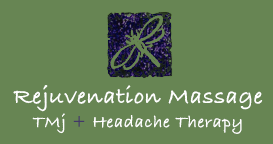Intraoral Massage
Intraoral massage is an effective treatment for clients who suffer from TMJ dysfunction, headaches or excess jaw tension. Latex-free gloves are worn while working inside the mouth to release the muscles and fascia involved with chewing and jaw clenching. This modality is used in conjunction with massage techniques for the face, scalp and neck muscles that affect jaw alignment and tension.
Common symptoms in TMJ dysfunction that can be helped by massage include pain with opening and closing, popping and clicking of the jaw joint, migraines and chronic headaches, bruxism, chronic tension due to repetitive oral habits (ie: lip/cheek biting), ringing or fullness in the ears, muscle imbalances caused by prolonged dental treatment, unexplained pain in upper teeth, and whiplash injuries.
Information About TMJ
- TMJ is the abbreviation for "TemporoMandibular Joint" referring to the joint itself, TMD is the abbreviation for "TemporoMandibular Dysfunction".
- 75% of the population has at least one sign of TMD.
- TMD is more prominent in women vs. men by a ratio of 4:1
- TMD affects most people within the ages of 16-30 years old, but it often persists for two or more decades from the age of onset.
- 90% of TMJ problems are related to an imbalance in the muscles associated with chewing and the temporomandibular joint.
- TMD often occurs when chewing muscles and the TMJ work incorrectly which causes cramping and spasms. These spasms become part of a cycle that can result in tissue damage, pain, and muscle tenderness.
- Clenching and grinding of teeth, called Bruxism, exhausts the chewing muscles and causes them to go into spasm, which with time will cause pain.
- Tension and imbalance of chewing muscles can cause the bite to shift putting strain on the disc located inside the TMJ which can cause popping and clicking in the joint.
Many of my clients have been successfully treated for TMJ syndrome using massage therapy. Most clients have noticed relief after one visit, but one visit usually is not enough to treat the entire condition. It has been my finding that most people respond very well within 3-4 sessions. The reason for this is that it often has taken quite some time for the symptoms to develope, and it generally takes more than one visit to reverse something that has been a progressive, long-term condition.
I hope that this information is helpful for you, and if you have further questions I would be happy to answer them. Please feel free to email me !

